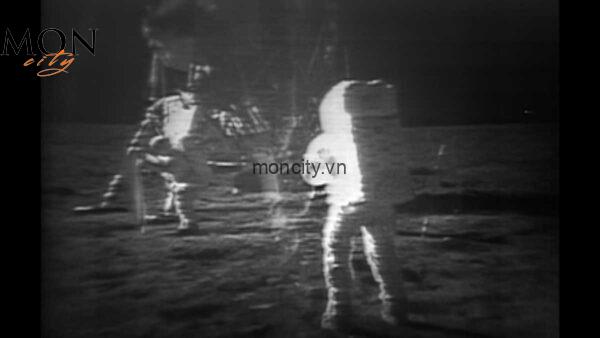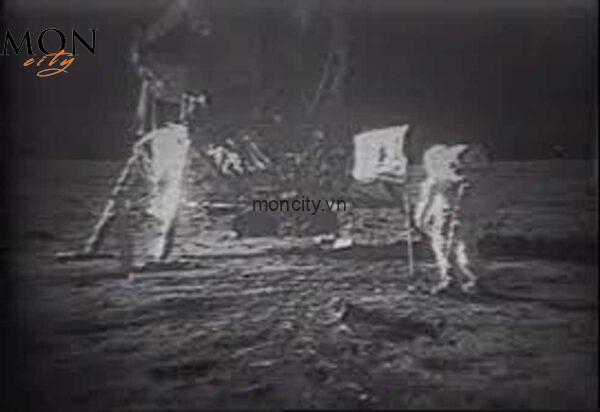Did Nasa Lose The Moon Landing Footage? Find Out The Astonishing Truth!
Did nasa lose the moon landing footage? This question has stirred controversy and skepticism among conspiracy theorists and space enthusiasts alike. In this article, we delve into the alleged loss of NASA’s moon landing footage during the Apollo 11 mission. We explore the search for the missing tapes, NASA’s official explanation, and the restoration process that eventually led to the release of the historic footage. Join us on a journey through the events surrounding the moon landing footage and discover the intriguing story behind Gary George’s purchase of the tapes. Welcome to Moncity.vn‘s in-depth exploration of this intriguing topic.

I. Did NASA Lose the Moon Landing Footage?
The Controversy Surrounding NASA’s Moon Landing Footage
The alleged loss of NASA’s moon landing footage has been a subject of controversy and speculation for many years. Conspiracy theorists and skeptics have raised questions about the authenticity of the moon landing and whether NASA deliberately lost or destroyed the original footage. They point to inconsistencies in the footage that has been released, suggesting that it may have been staged or tampered with. However, it is important to note that the scientific community and NASA officials firmly maintain the authenticity of the moon landing and refute these claims.
The Search for the Missing Tapes
In 2006, reports emerged that NASA had deleted some of the original footage of the first moon landing. This sparked a search for the missing tapes, with the public eager to uncover the truth behind the alleged loss. NASA conducted an extensive search of their archives and records but was unable to locate the missing tapes. Many believed that this further fueled the conspiracy theories, as the absence of the tapes raised suspicions about their authenticity. However, NASA officials stated that the tapes were most likely deemed unnecessary to keep, as all the video had already been recorded elsewhere and that the tapes were reused and erased. This explanation did little to satisfy the skeptics, and the controversy continued to swirl.
II. The Controversy Surrounding the Missing Tapes
Claims of Missing Moon Landing Footage
Since the historic Apollo 11 mission in 1969, there have been claims and speculations about missing moon landing footage. Conspiracy theories suggest that NASA intentionally erased certain scenes from the original tapes, leading to suspicions of a cover-up. These allegations gained momentum in 2006 when reports emerged that NASA had indeed misplaced or destroyed some portions of the moon landing video.
Supporters of these theories argue that the missing footage could contain significant evidence or anomalies related to the moon landing. Skeptics question why NASA would dispose of such valuable historical records if they were readily available elsewhere. The controversy surrounding these allegations continues to fuel debates and investigations into the authenticity and completeness of NASA’s moon landing footage.
| Key Points: |
|---|
| – Claims suggest NASA intentionally erased parts of original tapes |
| – Alleged cover-up leads to suspicions about missing footage |
| – Supporters argue missing scenes may hold vital evidence |
| – Skeptics question disposal if copies were already available |
NASA’s Response and Rebuttal
In response to allegations regarding lost moon landing footage, NASA released an official statement addressing these claims. The space agency acknowledged that a search was initiated in 2006 after reports surfaced about missing portions from Apollo 11’s mission on the lunar surface.
NASA officials stated that a thorough investigation was conducted, including comprehensive searches through archives and records. The conclusion reached was that the missing tapes were likely determined to be unnecessary copies and subsequently erased or reused. According to NASA, all essential footage had been transferred to the Johnson Space Center in Houston for broadcasting purposes, ensuring there were no lost scenes from the Apollo 11 mission.
“A deep search of storage facilities and logs concluded that it is very possible program managers determined no need to keep duplicate tapes – as all video was recorded elsewhere – and they were erased and reused,” stated the official NASA release.

III. NASA’s Response to the Allegations
The Investigation and Conclusion
In response to the allegations that NASA had lost crucial moon landing footage, the agency conducted an extensive investigation to address these claims. Officials stated that a thorough search of their archives and records concluded that the missing tapes were likely deemed unnecessary to keep, as all the video had already been recorded elsewhere.
According to NASA, the process of converting the footage for broadcast and transmission involved transferring it to the Manned Spacecraft Center (now known as the Johnson Space Center) in Houston during the mission. From there, the videos were converted into a format suitable for television broadcasting and linked to satellites before being transmitted back down to Earth to appear on commercial television. This conversion allowed the public to witness the historic event of human beings setting foot on the moon.
IV. The Rediscovery of the Moon Landing Footage
Searching for the Missing Tapes
In 2006, reports began to surface claiming that NASA had deleted original footage of the first moon landing. This sparked a search for the missing tapes and raised questions about the authenticity of the recorded events. NASA, prompted by the growing controversy, conducted an extensive search in their archives and records but was unable to locate the missing footage. The agency’s officials issued a statement acknowledging the possibility that program managers at the time might have deemed it unnecessary to keep the tapes, as all the video had already been transmitted and preserved elsewhere. They explained that the original films were potentially erased and reused.
However, despite these claims, NASA maintained that no scenes were missing from the Apollo 11 mission since the video transmission had been sent directly to the Manned Spacecraft Center (now known as the Johnson Space Center) in Houston and later broadcast on commercial television. The footage was originally recorded at a slow-scan rate, which means it had a frame rate of 10 frames per second and could not be directly aired on television. According to NASA, the film was converted for broadcasting and linked to satellites before being transmitted back to Houston and appearing on commercial TV networks. In 2009, the agency restored and released the footage to commemorate the 40th anniversary of the Apollo 11 mission, further dispelling the notion that any unseen videos remained.
V. Conclusion
While the controversy surrounding NASA’s alleged loss of the moon landing footage has sparked debate and skepticism, the agency has provided explanations and reassurances to address the concerns. The search for the missing tapes was conducted extensively, but ultimately, it was determined that the original footage was not necessary to retain as all the videos were recorded elsewhere. NASA confirmed that there were no missing scenes from the Apollo 11 mission since the video transmission was sent directly to the Johnson Space Center in Houston and then broadcasted worldwide. The restored moon landing footage was released in 2009 to commemorate the mission’s 40th anniversary. The story takes an intriguing turn with the purchase of the tapes by engineer Gary George from a government surplus auction. His acquisition adds another layer of interest to this captivating piece of history. In conclusion, the moon landing footage, once thought lost, has now been recovered, allowing us to relive and appreciate the monumental achievement of Apollo 11.